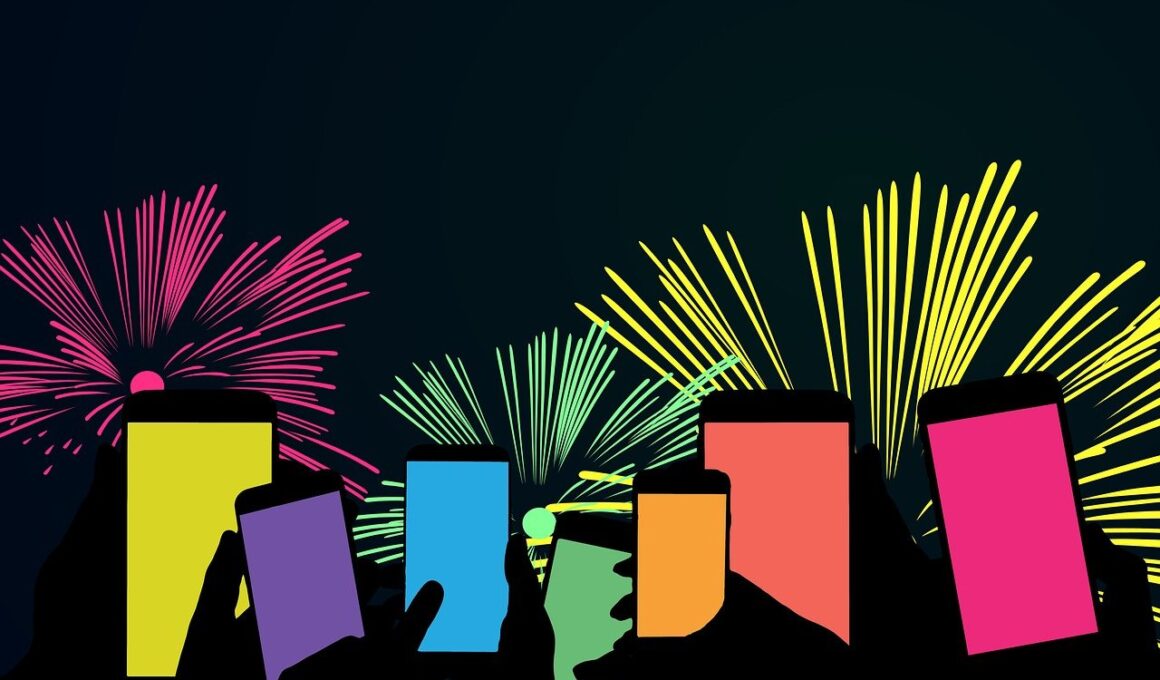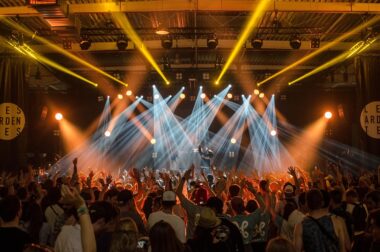Avoiding Common Mistakes in Event Image Optimization for Social Media
When it comes to optimizing event images for social media, many people overlook critical details that can impact visibility and sharing. A common mistake is neglecting the optimal image size. Social media platforms have specific image dimensions for optimal display. For instance, Facebook recommends a 1200 x 630 pixel image for their timeline. Choosing the wrong size can lead to cropping, affecting the visual appeal of your images. Additionally, using high-resolution images enhances quality but increases load times, leading to delays in website performance. To avoid this, consider reducing the file size without losing quality. Tools like TinyPNG can help. Another frequent error involves poorly chosen file names. Descriptive file names improve SEO and ensure your images are discoverable. Opt for clear, relevant filenames that reflect the event and include keywords. Lastly, engage in testing different formats. For example, JPEG is best for photographs due to its quality-to-size ratio, while PNG excels in images with text or logos. Ensure to analyze the image’s performance after posting for future enhancements. Attention to these details will significantly improve your event’s reach and engagement.
Understanding Social Media Image Types
Understanding the different image types for social media is crucial for effective event image optimization. There are primarily three formats to consider: JPEG, PNG, and GIF. JPEG images are excellent for detailed photos, like event photography, as they compress well and maintain quality. However, they lose some detail upon saving, making them less suited for images requiring sharp text. In contrast, PNG images retain all details, which is beneficial for graphics, logos, and text overlays. They are also transparent, ideal for layering graphics over backgrounds. Lastly, GIFs are invaluable for short animations, adding an element of playfulness to your posts. However, they are generally unsuitable for high-quality photographs due to the limited color palette. Beyond format, consider the color profile. RGB is optimal for digital and social media, as it captures the vibrancy of colors better online. Always remember to balance quality with file size to ensure quick loading times while maintaining aesthetic appeal. Testing various formats to assess engagement will allow refining your visuals over time, based on which formats garner more shares or interactions across different platforms.
Another common pitfall in event image optimization is failing to incorporate proper branding. Visual consistency reinforces your brand’s identity and helps recognition across platforms. Every event image should reflect your brand’s colors, fonts, and logo subtly but effectively. This fosters a sense of professionalism while differentiating your event from competitors. Alongside branding, captions and descriptions play a vital role. Pictures should tell a story, and accompanying text provides context. Incorporate relevant hashtags and keywords into these descriptions to boost discoverability, ensuring they relate to your target audience. Engaging visuals combined with insightful text can significantly enhance user interaction and sharing. Furthermore, using alt text enhances accessibility. Alt text offers a description of the image for visually impaired users and also assists search engines in indexing your content effectively. Engaging storytelling with visuals will help create a deeper connection with your audience. Don’t disregard the importance of testing different strategies and adjusting based on audience feedback. Regularly reviewing your metrics will help streamline your approach, ensuring that future event images continuously improve and resonate more with your audience.
Image Engagement Techniques
To further elevate your event images for social sharing, leveraging storytelling techniques proves valuable. Images that invoke emotions attract attention and encourage shares. Use images that capture peak moments from past events to convey excitement and anticipation. Close-up shots that depict emotions can resonate deeply with the audience, stimulating personal connections. Be cautious of color schemes, as they psychologically impact viewers. Bright and vibrant colors tend to grab attention, while soft and muted palettes evoke calmer feelings. Understanding your audience’s preferences allows tailoring images that align with their expectations. Another essential technique involves utilizing user-generated content. Encouraging attendees to share their images can promote organic reach and community involvement. Create a unique event hashtag to easily track and share these contributions. Reposting user-generated content not only engages the audience but also generates authenticity and trust. Additionally, video snippets can make a substantial impact. Dynamic content often garners more engagement than static images, thus incorporating short video clips can keep your audience informed and excited. Experimenting with these various techniques will help refine your overall strategy. Following these tips can significantly enhance your event image performance on social media.
Another significant aspect that is often overlooked is the timing of your post. The timing can significantly influence the performance of your images. Research shows that certain times yield higher engagement rates. For example, studies suggest that posting during peak user activity hours can enhance visibility. Each social media platform has its optimal posting times. Understanding when your audience is most active enables strategic scheduling of image posts for maximum impact. Furthermore, consistency is vital in maintaining audience interest. Develop a content calendar that outlines regular postings, engaging with followers at consistent intervals to keep your event visible. Engagement with your audience doesn’t stop at posting; interacting after the post is equally important. Responding to comments and shares fosters community while encouraging further sharing. Utilize analytics tools to gauze audience response, determining which images and posting times yield the best results. Additionally, following up with metrics allows for ongoing refinement of your strategy. Incorporate audience feedback into future posts, tailoring images and release times based on preferences and engagement. By understanding the crucial timing of posts, along with consistent interaction, you can further optimize event image performance.
Measuring Success
Measuring the success of your event image optimization efforts is crucial for continuous improvement. Use analytics tools provided by social media platforms to track engagement. Metrics such as likes, comments, shares, and impressions offer insight into how well your images resonate with your audience. Pay close attention to which images performed best; this can inform future content strategies. Analyzing engagement rates specific to each image type and timing also provides clarity. You can adjust image styles and the frequency of posts based on solid evidence. Set clear goals, including increase in shares or engagement numbers, to evaluate performance effectively. It’s essential to realize that social media is an evolving landscape, often demanding flexibility and adaptability. Regularly revisiting and revamping your image optimization strategies will ensure you stay relevant within the fast-paced environment. Keeping up with trends can further enhance engagement; consider experimenting with formats like Stories or Live Videos during events. Lastly, don’t merely rely on quantitative metrics; qualitative feedback from your audience can provide invaluable insights into how they perceive your images. This holistic approach to measuring success brings clarity to your optimization efforts.
As social media evolves, so does the need for constant refinement of event image optimization strategies. Staying informed about algorithm changes on platforms can significantly improve visibility. Understanding how these changes impact image display can be crucial in maintaining engagement levels. These platforms often prioritize different types of content, necessitating flexibility. optimizing your event images for trends ensures sustained relevance. Experimenting with new features and tools provided by platforms also enhances engagement; try utilizing features such as polls and interactive stories to captivate users. Moreover, collaboration with influencers in your niche can amplify reach. Influencers expand your visibility by sharing event images with a wider audience. The goal is to create engaging content that encourages sharing and interactions through effective optimization. Lastly, an understanding of different social media platforms helps tailor images accordingly. Each platform has unique audiences with distinct preferences. This nuanced approach ensures that the imagery adheres closely to audience expectations. By consistently innovating and adapting approaches, you not only enhance the impact of your event images but also foster a community of engaged followers who are excited to participate in your future events.
Final Thoughts
In conclusion, optimizing event images for social media requires a thoughtful approach that covers various aspects from size to content. Avoiding common mistakes is vital to ensure that your images reflect your branding while maximizing engagement. Pay attention to image types and ensure they are suited for the platform’s requirements. Utilizing effective storytelling techniques will encourage user engagement and foster community. Don’t forget to measure and analyze the success of your images as well, not only to track engagement but also to make adjustments based on evolving preferences. Success lies in the details; high-quality branding, timings, and engaging content should mesh seamlessly. Emphasizing these areas boosts the overall perceived value of your event images while enhancing audience interaction. Continually testing various methods helps refine your approach. Importantly, remain open to feedback and adapt based on user responses. This continual evolution ensures your event images remain relevant and impactful. Lastly, remember that consistent interaction fosters a community rather than just a following, enhancing long-term visibility. By implementing these strategies, you’re well on your way to creating a visually compelling presence on social media that resonates meaningfully with your audience.





